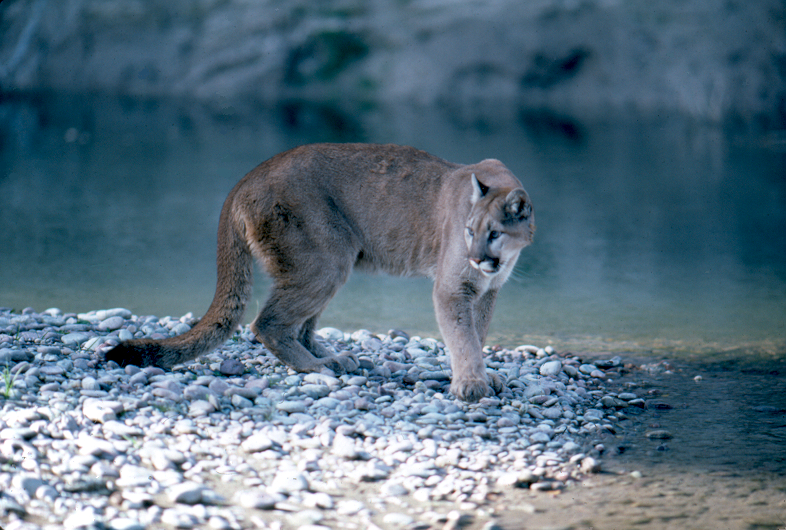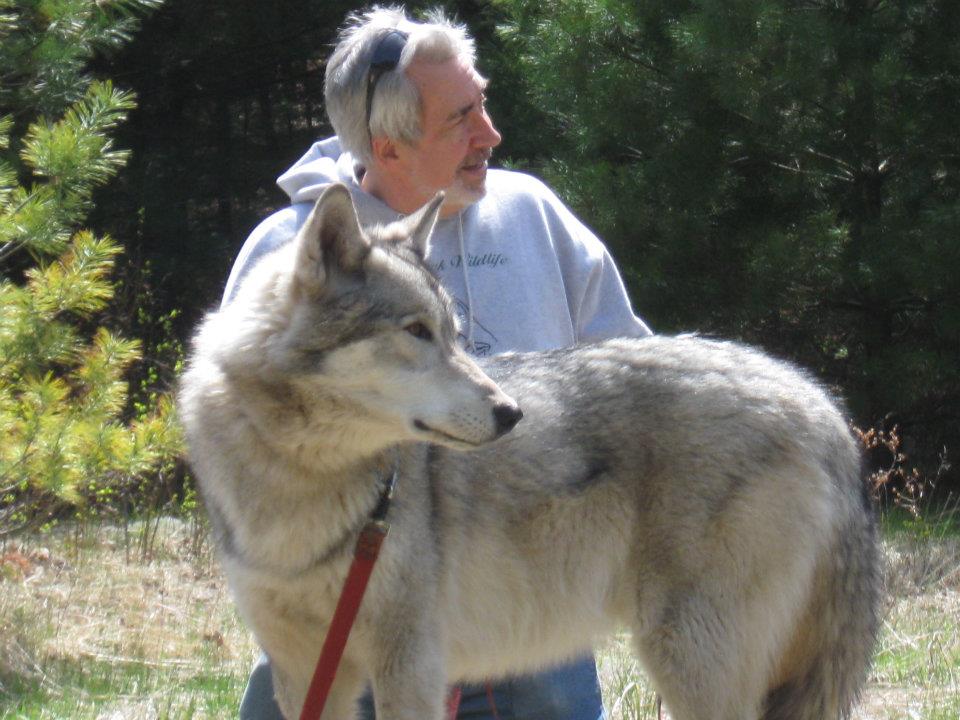
Cougar, Gray wolf (Zeebie by Julie Clark), and Adirondack Coywolf from trail cam at the Wildlife Refuge






|
The Economic Potential of Rewilding the Adirondacks - See
more at:
http://www.adirondackalmanack.com/2014/12/the-economic-potential-of-rewilding-the-adirondacks.html#sthash.I8I94Uml.dpuf
The Economic Potential of Rewilding the Adirondacks - See
more at:
http://www.adirondackalmanack.com/2014/12/the-economic-potential-of-rewilding-the-adirondacks.html#sthash.I8I94Uml.dpuf
The Economic Potential of Rewilding the Adirondacks - See
more at:
http://www.adirondackalmanack.com/2014/12/the-economic-potential-of-rewilding-the-adirondacks.html#sthash.I8I94Uml.dpuf
The
Economic Potential of Rewilding the Adirondacks Steve
Hall, Adirondack Wildlife Refuge Originally
published in Adirondack Almanack The
Adirondacks is the largest park in the lower 48 states,
its patchwork quilt of private and public lands so vast, you could
easily fit
Yellowstone, Glacier, and Yosemite inside the Park’s 6 million acres.
Tourism
is a key business in the Adirondacks, with 12.4 % of all jobs related
to
tourism. At the same time, only
$2 out of every hundred spent on tourism in New York State ends up
in the
Adirondacks. Even granting that 64% ends up in that tourist mecca, the
Big
Apple, the numbers for the Adirondacks, and the tourist attractions
they offer,
seem lower than you’d expect. Most
of our Adirondack towns and villages, particularly
those outside the High Peaks, Lake George and Old Forge areas, present
a
challenging environment in which to make a living, and our kids are more
likely to leave the Adirondacks for more promising job markets.
Some folks
say bring back manufacturing, others say build more resorts, still
others say
“leave it alone, we like it this way, the fewer people and tourists the
better”. But if we do agree to discuss as a goal, bringing more
opportunity to
the smaller towns and hamlets within the Park, is there a way to do
this that
uses current and potential natural resources, such as wildlife? Wildlife drives tourist revenue Wildlife
helps drive tourist revenue, and can therefore help
create hospitality and infrastructure support jobs. Wolves were
reintroduced to
Yellowstone and central Idaho in the mid 90s, not only to rewild
Yellowstone,
but also in an attempt to better manage the exploding elk herds, and
the ecosystem
damages they were causing. Lost
in the ongoing political
screaming from pro-wolf and anti-wolf factions on either side, was
an
interesting economic development: in data gathered through surveys
between 2004
and 2006, it turned out that a high percentage of Yellowstone visitors
cited
the possibility of seeing wolves, as a major factor in visiting
Yellowstone. This
translated into an estimated $35
million in extra annual dollars spent in the local economies of
Gardiner,
West Yellowstone, Silver Gate, Cooke City, and the other Montana and
Wyoming towns
which border Yellowstone. About 3.5% of Yellowstone visitors claimed
they had
come only
to see wolves, and would have gone elsewhere (Banff, Denali, Algonquin,
etc.)
were there no chance of seeing wolves. The
Regional Office of Sustainable Tourism (ROOST) promotes
Adirondack tourism to the traveling public, and releases annual
reports, based on surveys of tourists who interact with the
visitors’
center through walk-ins, call-ins, reach out and social media. Last
year’s
report estimated that these 477,000 tourists spent about 177 million
dollars in
tourist related activities, such as lodging, dining, shopping, etc.,
with an
average stay of about 5 days, and an average spending rate of about
$325 per
day. Hiking is the most popular reported outdoor activity, followed by
canoeing
and kayaking, skiing and snowboarding, and the ever more popular
cycling.
Curiously, the only mention of wildlife viewing queried in the survey,
are
visits to the Adirondack
Wildlife Refuge, where visitors go on the “Wolf Walk”, to learn
about
wolves What
if ROOST actively promoted wildlife viewing, for
example, the possibility of seeing elk, wolves or cougar, as a remote
possibility
while hiking (wolves and cougar tend to flee), better possibility while
canoeing (all mammals come to drink), and a still stronger possibility
while
driving (most wildlife sightings are of animals crossing roads). What
if this
emphasis on wildlife tourism resulted in only a 10% increase in
tourism? That
would be over $16 million dollars, and would not include the majority
of tourists,
hunters, fishermen, etc. (some seven to ten million!) who come to the
Adirondacks
each year, without interacting with the tourist bureau. If we included
these
visitors, and added ten percent, we’d be bringing some $160 million
dollars
into the economy. These speculative estimates do
not include potential boosts
to hotels in convention and meetings bookings. There
are success stories about restoring elk to previous
habitats where they had been hunted out before the advent of hunting
seasons
and regulation, such as in Kentucky and western
Pennsylvania, where restoration has been so successful, elk have
become an
important tourist revenue factor, and controlled, seasonal hunting has
resumed. Adirondack mega fauna of the past While
the increasing numbers of deer and black bear
constitute Adirondack mega fauna today, in the not so distant past, the
ecosystem of the “forever wild” Adirondacks supported wolves, cougars,
lynx,
wolverine, moose, elk and wood bison. Today, moose,
recovering from a history of unrestricted hunting, probably number a
very
sparse 800 to 1,000 animals in New York, and the DEC is engaged in
surveys
to get a better handle on moose numbers, and whether they are
increasing or,
following the current trend in Maine, New Hampshire, Vermont, Minnesota
and
Montana, decreasing.
Studies
indicate that potential wolf recovery areas include the Adirondacks and
northern New England. At Adirondack Wildlife, we frequently receive
photos of “Eastern
Coyotes”, or what we call “coywolves”
from FaceBook
followers, all asking whether these are “wolves”. The coywolf
is a wolf-coyote hybrid, and as the accompanying photograph from
a trail
cam at the Adirondack Wildlife Refuge shows, coywolves are
sometimes twice
the size of western coyotes, and often difficult
to distinguish from wolves, especially for a layman who sees one
for only a
few seconds. The
largest obstacle to wolves returning to the Adirondacks
is relentless hunting and trapping of wolves in southern Quebec and
Ontario.
For our purposes, bolstering the Adirondacks as a place where visitors
may see
wolves, is it so critical what percentage “wolf” our wolves are, when
few visitors
can distinguish gray wolves from Canadian wolves from coywolves? Wandering,
transient male cougars occasionally pass through
the Adirondacks, but there is no evidence
of female cougars raising kittens and defending territories anywhere
east of
Missouri and the Michigan Upper Peninsula. Male Cougars will set up
territories
when they have sufficient prey, which they do
have in the
Adirondacks, and female cougars in territories overlapped by their
territories. Unlike the confusion between coywolves and wolves, it’s
difficult
to mistake
a cougar for, say, a bobcat or lynx, unless presented with an
obscured or
partial glimpse. Without reintroducing cougars to the Adirondacks,
particularly
females, it is unlikely we’ll have a breeding population in the
Adirondacks. More
than 300 Rocky Mountain Elk were released in the
Adirondacks over six years, starting in 1893, but were extirpated by
hunting,
poaching and the expansion of white tailed deer, who passed brain worm
and round
worm to the elk. Other than that experience, mentions of elk are only
found historically
(a travel editor mentions them in 1836), and in scattered Iroquois and
Algonquin references. Wood Bison have probably been gone for over 200
years,
and I don’t believe there have been any specific studies about whether
the
Adirondacks, logged, cleared, reforested and generally altered over
time, would
offer suitable browse for elk and grazing for bison. Lynx are
occasionally reported in New York, but as with cougar, there is no
evidence
yet of breeding and setting up territories, although Sue Morse of Keeping Track has encountered them
in
northern Vermont. Eighty lynx from northwest Canada were radio collared
and
released in the Adirondacks, over a three year period, starting in 1989
and some
dispersed up to 400 miles from the release areas. Unlike the bobcat,
which has
a more generalized prey base, and whose numbers continue to expand in
the
Adirondacks, lynx are specialized snowshoe
hare
predators. Wolverine were last reported in New York in 1840, and their
smaller
cousins, fishers, are doing well in the Adirondacks, and expanding
their ranges
in New York State. Previous
reintroductions of mega fauna often suffered from
lack of funding for follow up. What went right and wrong with
Rewilding in Yellowstone The
ecological
benefit of returning a keystone predator to Yellowstone was to
restore some
natural balance, but politics is never far from any discussions about
wildlife
and sustainability. In the years since wolf reintroduction, anger over
real and
imagined consequences of wolves in ranching and hunting country, led
state
legislatures to cancel the thirty mile no-wolf-hunting buffer zone
within the
Greater Yellowstone Ecosystem around Yellowstone National Park, and
since
wolves don’t know where the park boundaries lie, their numbers in
Yellowstone
have been cut in half by hunting. The newly elected Congress is more
likely to weaken
the Endangered Species Act, as well as return more control over
wildlife and
natural resources to the states. In other words, the positive effects
of wolves
returning to the Yellowstone ecosystem have been seriously compromised,
as has
the chances of tourists seeing wolves in Yellowstone. Good discussions
about
keystone predator effects and the science of “Trophic Cascades” may be
found in
“The Wolf’s Tooth” and “The Carnivore Way”, by Cristina Eisenberg. The big picture Hunting, as reflected
in the annual purchase of hunting licenses, is declining
in the U.S. for many reasons, including habitat destruction, and
less hunter
free time for often more distant hunting access. More importantly, from
a
cultural perspective, our children and grandchildren are growing up in
the digital
age, and for many, what little interaction
they have with nature is through electronic devices, video games
and media. Most
significantly, the earth has lost 40% of its wildlife
over the past 50 years, and appears to be in a period scientists are
calling
the sixth
extinction. Unlike previous mass extinctions, this one seems to be
driven
by the direct impact of an exploding human population, with its
critical
hallmarks being habitat destruction, overexploitation of our resources,
pollution, poaching, invasive species and disease. We seem to have lost
sight
of the fact that nature may be “entertaining”, but we are also a part
of
nature, and we despoil it at our peril, even as we deny doing so. Yellowstone of the East? Does
all this mean that we could turn the Adirondacks into
the Yellowstone of the East, by rewilding mega fauna?
Well, not exactly. First of all, from a
wildlife perspective, much of the allure of Yellowstone is its wide
open
vistas, meaning it’s much easier to spot large animals, while the
Adirondacks
is more characterized by mixtures of thick conifer and deciduous
forest. As in
many forested wildlife environments, when you hike in the Adirondacks,
critters
tend to hear you, see you or smell you, and flee before your approach,
which is
why you’re more likely to see wildlife while canoeing, or surprise
wildlife
while driving. There
is a much better model for a rewilded Adirondacks, and
that is Algonquin Provincial Park
in
Ontario, about two hundred ninety miles northwest of Lake Placid. Both
parks
are part of the Southern Canadian Shield, and are generally
characterized as
Eastern Boreal transition ecoregions. The Adirondacks has mountains,
while
Algonquin features rugged and rocky hills, but both have many lakes and
waterways,
and both are visually inspiring. Algonquin
forms a wildlife
corridor with the Adirondacks, and comprises the northern end of an
important gene exchange with the Adirondacks, mixing gene pools, as animals wander back
and
forth between ecosystems, just as the Adirondacks forms such a
corridor
with the Catskills and Appalachians. One of the most important
challenges for
parks and wildlife refuges is the dangers of genetic isolation, which
impacts diversity
within a species, or as we put it at the Refuge, “The key to wildlife
survival
is connected habitat”. It is in the interests of both these parks to
restrict
trapping in the corridor between them, to allow the flow of genes back
and
forth. Algonquin
has populations of Eastern Canadian wolves, deer,
beaver, and may be the surest place in North America to see moose. This
last is
because the 40 miles of Highway 60 runs through the southern end of the
park,
and is bordered by many bogs, beaver ponds and meadows, which attract
moose at
various times of year. Algonquin is also the only park I’ve visited,
besides
Yellowstone, where I’ve seen wolves multiple times. Curiously,
Highway 60 is somewhat mirrored by Route 3 in the
Adirondacks. Picture, in particular, that sparsely populated, 40 mile
long stretch
of Route 3 between Tupper Lake and Star Lake, and like Highway 60,
passes
through areas where the forest is interrupted by lakes, bogs and beaver
ponds,
or the stretch between Paul Smith and Malone, or Tupper Lake and Old
Forge. The
secret to successful wildlife tourism is often not only what
you are very likely to see, but what you believe you may see. Imagine if we
add to the various reasons to visit the Adirondacks, wildlife viewing,
the
outside chance of seeing a moose browsing in a beaver bog, or hearing a
bull
elk bugling in a meadow, or a wolf or cougar crossing the road. Even if
we had
cougar and wolf, the chances of seeing them in, say, the High Peaks
area, would
be very low, as there are fewer deer there, and too many people. If
you’re
staying at one of the large hotels in Lake Placid, where according to
ROOST, most
Essex County lodging dollars are spent, you may decide to take that
picturesque
drive from Saranac Lake through Tupper Lake, and on towards Watertown. You
may discover there is more wildlife off the beaten path between
Tupper Lake and Star Lake, but if you wish to grab a room to stay in
the area
for a day or so, so that you can go out with your camera at dawn or
dusk
(always the best time to see wildlife), you’ll find limited facilities.
Or, to
look at it from the inn keeper’s perspective, let’s say you’re running
a small
motel or BnB in Tupper Lake, Cranberry Lake or Star Lake, and you add
to that
list of amenities on Trip Advisor, Home Away or AirBnB, wildlife
viewing,
featuring photographs of wildlife, taken by your guests. What
if you are a hunting or fishing guide, and you’re
operating out in the wildlife rich, Cranberry Lake area? You already
know that
your deer hunters are not patronizing you because they’ll have more
deer to
target. We tease visitors who come to the Adirondacks to hunt deer,
about the
fact that there are very likely more deer where they live than here,
and they
always respond the same way: “We’re here because
it’s the Adirondacks”. What
if you add to the list of hunt and release creatures wolf and cougar?
What
hunter/ hiker/ fisherman wouldn’t be thrilled to see, never mind
photograph
either? A
rewilded Adirondacks would have a major tourist advantage
over Algonquin. While Algonquin is only about a four hour drive from
Toronto
and three hours from Ottawa, the Adirondacks is within driving range of
the
much more populous New York, Buffalo, Boston, Albany, Hartford,
Burlington and
Montreal metro areas, and has a more robust hospitality infrastructure.
In
addition, access to Algonquin is remote, and once you’re within 100
miles of
the east or west gates, you’re on two lane roads. This
article is not about whether rewilding
will
work in the Adirondacks, and there are a number of additional issues to
discuss, which I’ll tackle in subsequent articles, such as, how will
rewilding
impact sheep and cattle ranching, are wolves and cougars dangerous to
people,
and will this impact the behavior of deer towards hunters? There are a
number
of non-profits currently working on
rewilding, with habitat specialists and biologists taking a fresh look
at an
old topic, because they have learned much more about our habitat and
its
carrying capacity for wildlife, and like many others, they view the
preservation of the wild as a legacy and a duty. They also see what is
happening on the Federal level, and are thinking this may be an
opportunity for
visionary business, civic and both state and local political leaders,
to
examine a potential broadening of the Adirondack economy, and step up
to
promote a real return to “Forever Wild”. |

Algonquin to Adirondacks Corridor, click on map for A2A web site
Bull Moose in Alqonquin Provincial Park, November 2014, by Steve Hall


Above, Lamar Canyon wolf pack member, Lamar valley, Yellowstone, Sept. 2012, by Steve Hall. Below, wolf-spotters, Lamar Valley.
| How Did We Get Dogs From Wolves?
Steve Hall |

Wof Watchers in the Lamar Valley in Yellowstone.
| The
Co-Evolution of Wolves and Humans Wolfgang M. Schleidt/Michael D. Shalter |

Zeebie by Alex Hall, left, and by Julie Clark, right
Zeebie, left, and Cree, with Alex

Great places to visit, and great web sites for learning more aboiut wolves






What are we reading?.... Great reading about wolves & ecosystems, for kids....and adults
Click on book for Amazon link.
Cristina Eisenberg was the Keynote Speaker at Adirondack Habitat Awarteness Day 2014

Above, We do Presentations at Schools & other Public venues

Dire wolf, by Mark Hallett, http://hallettpaleoart.com . The Dire wolf was common throughout North America, when the Eurasian gray wolf crossed the Bering Land Bridge about 250,000 years ago. The dire wolf went extinct about 8,000 years ago, partly due to competition with the smaller, swifter gray wolf, and partly because of the pressure placed on large megafauna by human hunter-gatherers, who first crossed the Land Bridge about 15,000 years ago.

David Mech on ADK Wolf Reintroduction



Cree howling in the meadow, center, and listening to Zeebie's response
| Home |
Release of
Rehabbed Animals |
Learn
About Adirondack & Ambassador Wildlife |
Critter
Cams & Favorite Videos |
History
of Cree & the Adirondack Wildlife Refuge |
|
Artists Home |
ADK Vacation Rentals |
ADK Real Estate |
|||||||||||